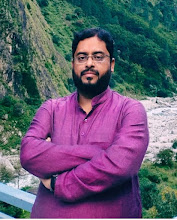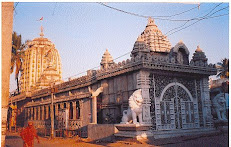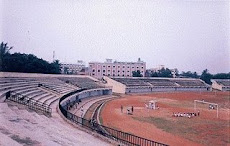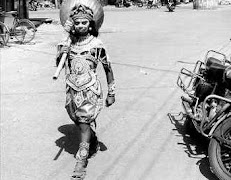The earliest live performance of a song that comes to my
mind is from a beggar woman — a very old woman in the early 1960s — who used to
come and sit in front of our old ancestral mansion after stepping on to the
verandah and holding her walking stick. She would sing with both her hands
holding the stick, giving the rhythm (timing) support for the song, producing a
peculiar sound when an iron ring in one of her fingers made contact with the
stick.
Those were the times when the country’s economy was in the doldrums,
what with so many beggars straggling on the roads and standing in front of
every house, expecting alms. That was a time when apartment culture was not
even heard of and most of the families lived in their own houses, some small
and some big. Many of them used their musical talents to justify their begging,
perhaps with a self-respect satisfying them that the people who were giving
these homeless people coins or rice were pleased with their musical
performances.

Those were the time when automobiles were very few and there
was virtually no noise pollution. Radio was a luxury for the lower middle class
and the upper middle class. Those who were able to afford a radio set were
considered highly privileged. A telephone at home was considered a dream of
only the few who had the guts to dream to become rich. Ford-made cars of the
old model were the popular ones with the economically stable upper middle
class.
A neighbour receiving an occasional telephone call would
cause the others much irritation, perhaps because they thought that undeserving
people were getting calls over telephone that only the rich deserved.
Those were the days when villagers used to travel in bullock
carts to the nearest towns to watch films, the only source of mass
entertainment then. I remember at least 50 to 60 bullock carts parked near a
cinema hall named Utkal that carried villagers from different hamlets around
our the then-town Berhampur just to watch the film Veer Bhimsen in which Dara
Singh played Bheem. The famous Goddess Festival, popularly known in Odia as
Thakurani Jatra, also was in progress. The selection of the perfect time to
screen mythological films by the cinema hall organisers was usually the two
months when the festival would be in progress so that the masses that visit
Berhampur from different places to have a darshan of the Thakurani Maa will
also have the luxury of seeing other screen gods like Krishna, Rama and others
from Indian mythology.
Also prominent were the roads with men donning make-up and
suitable attires to resemble mythological characters, a traditional practice to
please the goddess. For some, this period would be a boon to earn an extra buck
on the pretext of donning the disguise that made it mandatory for every one
they approached to give them some contribution with which the former was
supposed to buy prashad and contribute to the festivities. This would be a time
when the only dominating thought in every mind was the goddess.
During the last week of the festival, roads would get
overcrowded and even walking on the main road was possible only by jostling
through the crowd — let alone riding a bicycle. The tradition still continues
but with certain conditions put in place by the authorities. First of all, the
period of festivities has been reduced to only a month because of shortage of
water and power.
The number of people donning different divine avatars has
substantially come down, what with economic prosperity that does not compel
many to go for begging in disguise. However, one thing remains unchanged — the
unfortunate men with the soul of females — females trapped in male bodies —
this is a period when everyday they wear a saree and make themselves look like
the opposite sex, often creating an impression that what the crowds see is in
fact a woman and not a man.
This time, as the festival was celebrated, all those vivid
images locked in my mind since childhood came rushing to the surface in a
flashback. I prostrate before the Goddess Budhi Shantarani for giving us, the
Berhampurians, so much to enjoy and so much to seek from her, along with, of
course, her blessings.
-By P Parthasarathi, (parth1956@gmail.com)
Published: 28th October 2015
- LInk
http://www.newindianexpress.com/columns/How-the-Berhampur-Goddess-Festival-Used-to-Be-Celebrated-in-All-Its-Glory/2015/10/28/article3101527.ece

















.jpg)


















































No comments:
Post a Comment